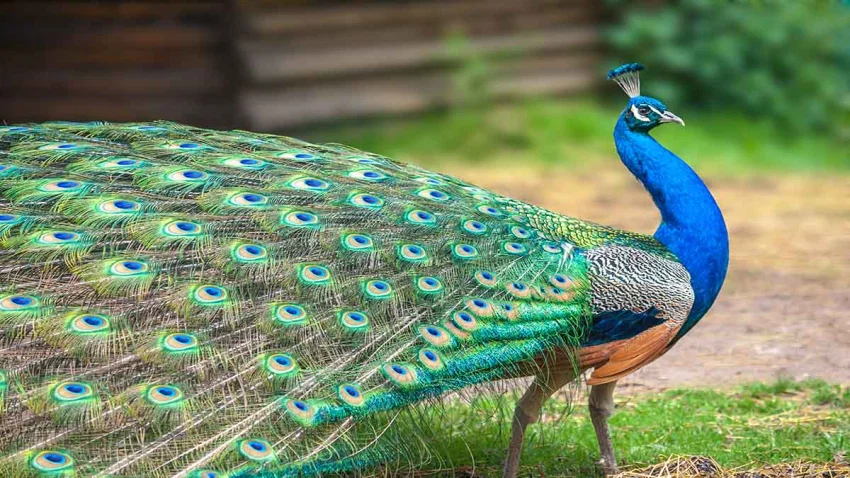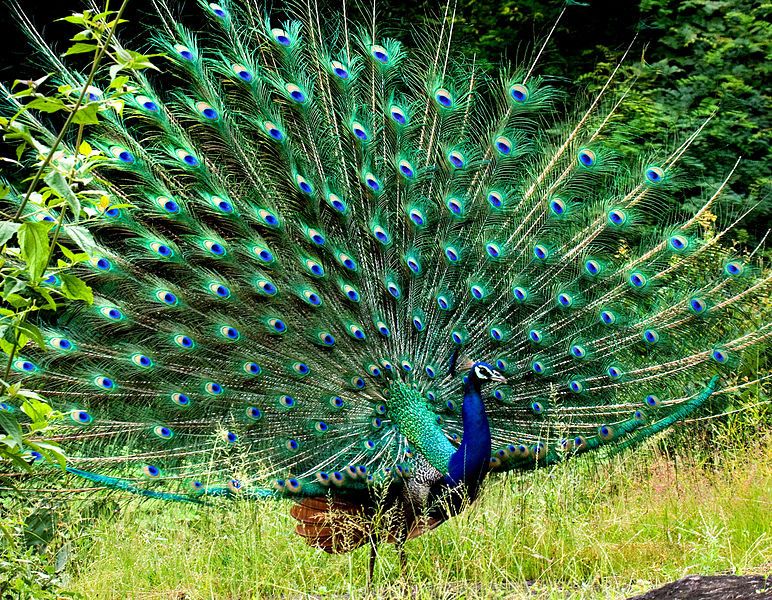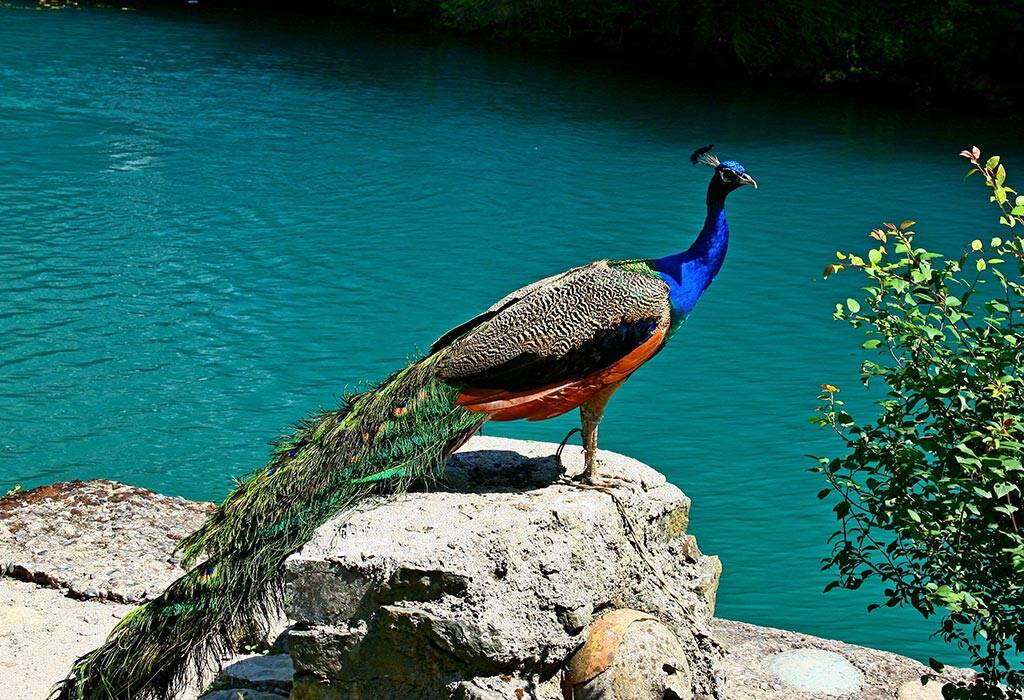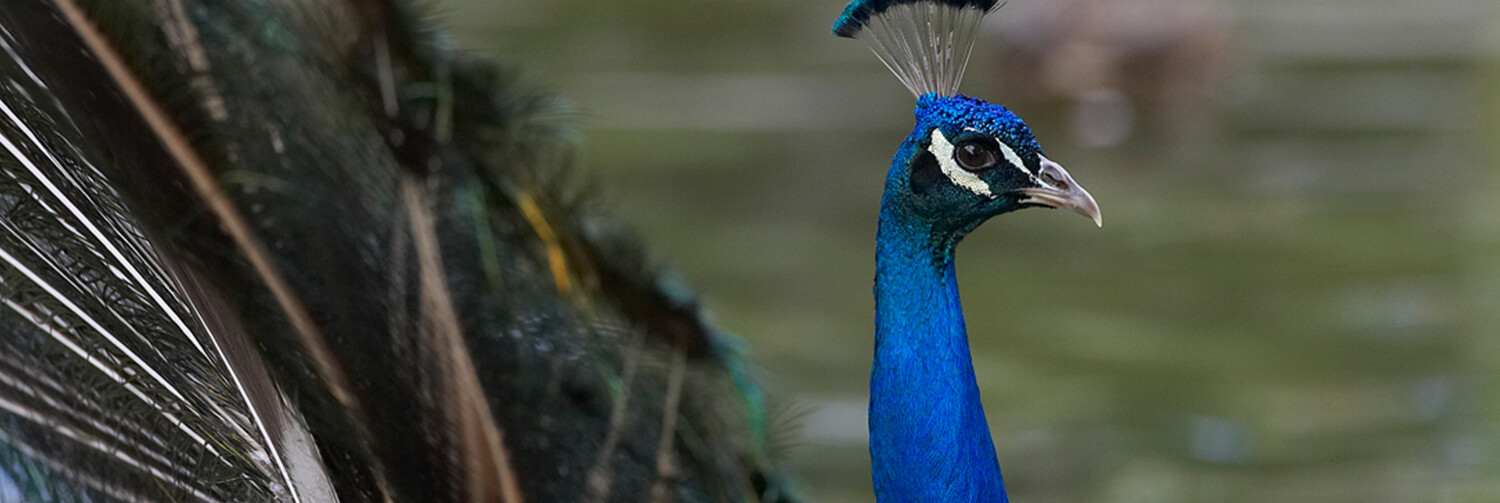STATUS
Critically Endangered


Indian peafowl are native to India and neighboring countries but are now found all over the world in feral colonies or as a domesticated species. In their native range, peafowl typically live near rivers or streams in wooded areas. They are also free-ranging in agricultural areas, villages, and even urban areas.
Peafowl are active during the day and roost together in trees at night, where they are safest from predators. They are busiest early and late in the day, foraging on the ground for seeds, fruit, and insects, and tend to rest during the hottest part of the day. If threatened or harassed, they are surprisingly quick and agile runners, despite their long trains.
In their native range, peafowl might get eaten by jackals or large cats such as tigers, leopards, and civets.
These tail feathers, or coverts, spread out in a distinctive train that is more than 60 percent of the bird's total body length and boast colorful "eye" markings of blue, gold, red, and other hues. The large train is used in mating rituals and courtship displays. It can be arched into a magnificent fan that reaches across the bird's back and touches the ground on either side. Females are believed to choose their mates according to the size, color, and quality of these outrageous feather trains.
The term "peacock" is commonly used to refer to birds of both sexes. Technically, only males are peacocks. Females are peahens, and together, they are called peafowl.
Suitable males may gather harems of several females, each of which will lay three to five eggs. In fact, wild peafowl often roost in forest trees and gather in groups called parties.

STATUS
Critically Endangered

SCIENTIFIC NAME
Pavo cristatus

POPULATION
100,000 left

LENGTH
2.3 metres (7.5 feet)

WEIGHT
weigh 9 - 13 pounds (4 - 5.8 kg)

HABITAT
RAINFORESTS
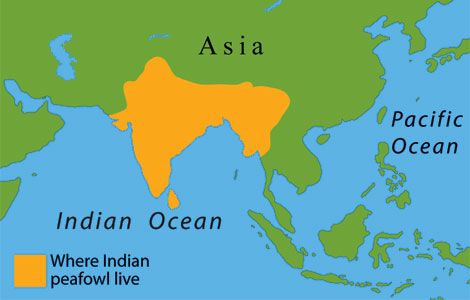
The peafowl is extremely crucial for our ecosystem as they feed on insects which may harm the crops, thus they help the farmers and keeping a check on the insect population
Peacock is the national bird of India and hence very important for the Indians.
Their population is threatened by poachers who poach these birds for feathers and meat.
The Indian Blue Peacock is a universally known bird with a fan- shaped crest. Golden peacocks are found in Burma, Assam and other North-Eastern States.
From ancient times, peacock has drawn the attention of poets, emperors, invaders, warriors for its beauty and grace. It is no doubt that undoubtedly peacock is one of the most beautiful birds of the world.
